ADRIAN McGoldrick’s greatest feat as IHRB senior medical officer was securing the acceptance of jockeys that what he was putting in place was for their benefit, even if it meant them being on the sidelines longer. He held their hand rather than bullied them.
Jennifer Pugh, who has been in the job since January, has a similar philosophy but having soldiered for a number of years as a point-to-point jockey and former champion lady rider, she knows that this is a different breed.
“We all did it. We all waved at the doctor from a distance. ‘I’m fine!’ It is ingrained into jockeys. Just whatever way they are wired, it is built into them to try and dupe the doctor. A lot of that is just their own need to continue riding, their need to not be off for prolonged periods. If you show the doctor the wrong thumb that was broken, you can show them that again in a week’s time, as opposed to five weeks for a real fracture to recover.
“Adrian changed. His approach was always ‘How quickly can we get you back?’ not ‘How long do I need to stand you down for?’ That is my approach as well. The role now is about supporting you through your injury, making sure you are with the right person, making sure you are getting the right rehabilitation, keeping your mind active, getting you through that period of injury and getting you back as quickly as possible.”
The role now is about supporting you through your injury, making sure you are with the right person.
Filling in dead time as a result of injury has emerged as a priority now that mental health has thankfully become a topic that is being discussed more openly. Initial research suggests that jockeys suffer symptoms of depression to a far greater degree than other professional sportspeople or the general public.
“You have so much time on your hands, you are watching racing every day, looking at declarations, horses you could ride, watching a winner and missed opportunity.
“That can be really difficult psychologically, plus the fact that you are in pain and you are not sleeping well and you are on medication. You have got the worry and stress financially then. You are not earning. So for some of them the temptation is to use it as a time to have a good time. That is fine for a little bit of the time but then you find that your routine is gone and your fitness is gone, and your weight is gone out of control. That has to be reined back in again.
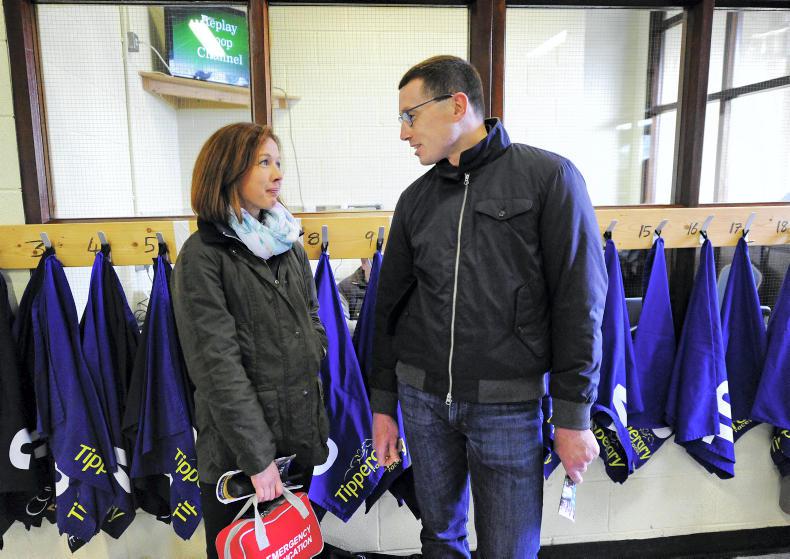
Jennifer chats to Kris Weld in the Tipperary weigh-room \ Healy Racing.
“We are lucky with the Jockey Pathway that the HRI have. There are supports there so you can go and see the dietitian when you are out. You can get back into sports and conditioning very quickly.
“You can see the physiotherapist at any stage when you are out injured. Not even for that injury but to try and keep your general fitness up and keep your weight under control. You are not facing a huge battle in the week prior to you going back to your first ride when you realise you have seven or eight pounds to skip off.
Helpful
“The biggest danger is mental. The sports psychologist is there as well which is very helpful when people are out injured. I try to encourage them to go particularly if they are going to be out for a long period of time. Also, go and do something, do a course. There is so many online stuff, go and do something in IT, go and do something in RACE in Kildare, they run loads of courses. You have the CARE (Careers and Racing Education) department in HRI. You are going to be out for this time, make use of it.”
Historically and culturally, the Pathway is evidence of the massive shift in approach and mindset within racing, albeit that the buy-in is not yet universal. Where the Pathway – which provides its services free of charge to all licensed jockeys – can be really beneficial is normalising the services for younger jockeys and enabling them to build relationships with the providers.
To further cement those relationships and emphasise the importance of doing things properly, new jockeys must now attend a course that includes exposure to the Jockey Pathway services before being granted their licences.
“Up until now, if you applied for your licence you just applied, send in your referees and go for an interview. Now there is a two-day licensing course. In that they do a fitness test, a musculoskeletal assessment.
So education, education, education to try to get them to manage the weight better.
“They see the sports psychologist, the sports and conditioning guy, the dietician. The plan is that within their first year, or every year of their apprenticeship, they will have to have seen the dietician at least twice, the psychologist once, the sports and conditioning once. This will ingrain in them the benefits of availing of the brilliant services of the Jockey Pathway and that this is part of being a jockey.”
Athletes
The challenge has always been for jockeys to see themselves as athletes, albeit ones with significant horsemanship skills that are the primary requirements for doing their jobs. But they need their bodies to be in good condition to utilise those skills in the best possible manner.
Pugh is in favour of increasing the minimum riding weight, because of evolution, but cautions that this in itself is no panacea as heavier riders would be brought into the spectrum where unhealthy practices might get them opportunities.
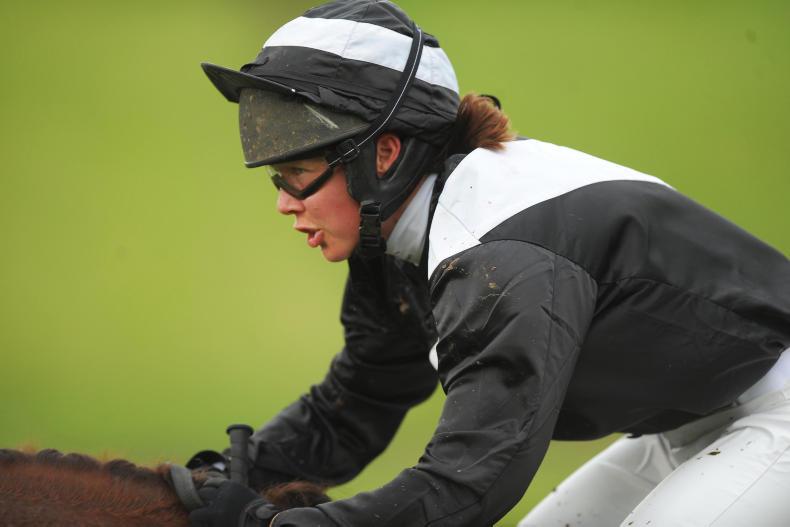
Jennifer in action in 2011/ Healy Racing
“I think the minimum weight is too low but we need to do more in raising the bar with trying to achieve weight in a more healthy manner. That is when things like nutrition come on board.
“I don’t think we are going to get rid of saunas and jockeys running on the track in sweatsuits. But if you get it where they were sweating one or two pounds as opposed to five or six, which is not uncommon in both jump and flat. So education, education, education to try to get them to manage the weight better. Hopefully, eventually a rise in the weights to stop them making the really crazy minimum weights.”
America has a very bad reputation for flipping (making yourself sick after eating) and reports suggest it is occurring in Britain too. The same level of suggestion doesn’t appear to be around Irish jockeys, but although there hasn’t been a positive test for diuretics in more than 10 years, Pugh isn’t complacent.
Jockeys have their minimum weight assessed at the beginning of their careers in Ireland, based on a six-week period. In France, each jockey has their minimum weight re-evaluated at the start of every season.
Having something of that nature is an aspiration for Pugh although she acknowledges that it may be a long way away. It is certainly something that she would like to see applied to apprentices, given that a minimum weight applied at 16 is unlikely to be applicable at 20.
“We have more and more evidence coming in support of a rise or a change in the weight structure to some degree. The bone health study which is linking the jockeys to osteoporosis. There is a study at the moment looking at their cognitive function. The mental health study, the results are there it is showing huge difficulties and a lot of that is because they are starving. There is a lot of research going on in the UK as well which we will marry with ours. I think will continue to push for changes.
“Primarily jockeys have to be horsemen and women. You have to understand racing, you have to understand horses, pace, riding over fences, riding out of stalls, settling a horse. You see the people who, they just drop their hands and all of a sudden this horse relaxes.
“When you see some of the top jump jockeys over fences, it is a beautiful thing to watch. But I think they also have to know that in order to do that, and put all those riding skills into good effect, you also have to look after your body.”
Recently the IHRB, in association with the Jockey Pathway, launched details of new race-day nutrition guidelines in weigh-rooms at racecourses following research and audits carried out by Pathway nutritionist Gillian O’Loughlin, Pugh, McGoldrick and UCD MSc dietetic students Esme Ward and Ruth Drennan.
The latter duo went to 25 of the 26 racecourses in the summer of 2018 to inspect the food offered, its nutritional value, what options were available. They spoke to jockeys and racecourse managers. They all pored over the data and came up with the guidelines for tracks to follow.
“Historically they starve for 24 hours, they dehydrate and they live on jellies during racing. It is high fat, sugar and salt to get the boost. They are drinking fizzy drinks to keep their sugar boost and they are really dependent on them.
“If you try to take the jellies away there will be a mutiny. The guidelines are about trying to make sure they have a choice. There will be some rubbish there because we can’t take it away immediately.
“You can eat healthy, nutritious snacks throughout the day. You will feel less hungry. You will get some nutritional value for it.
“If you had five biscuits, one between each race to keep you going, it is the equivalent calorie count of a nice healthy chicken curry. You are wasting your calories for no nutritional value.
Hungry
“Then you leave the races and you are hungry because jellies don’t fill you up for the day. And you are on the way home and your only option is the chipper. Your weight the next morning is back up to what it was the previous day and you are back to that cycle.
“So we are asking racecourses is for a buffet style presentation of really simple things. If you put a bowl of apples and oranges, they won’t be eaten but if you chop it up and put it in a fruit pot they will be gone off the shelves.
“Some of the racecourses have done different things, hummus and dips and your low salt crackers and breads that you can be snacking on. And plenty of fibre that fills you up with very little calories. You can get through your race day without your sugar dependency. Then we are asking that they provide a hot meal at the end of the day.”
While Pugh is a doctor to the jockeys, she is very cognisant that stable staff need to be catered for on race days too in a far better manner than is currently the case, and has liaised with some industry figures in this regard.
........................................
She was reared on the stories her father Mayne Kidd told of the old days, of her grandfather Robin and her great-uncle Jack, who was head lad for Fred and Mercy Rimell. Robin was a trainer, Mayne rode and then trained. There were always horses around and Jennifer and her sister Jackie were always encouraged to get stuck in.
In all she rode 15 winners between the flags, with the highlight coming in 2009 when she booted home eight of those successes and shared the ladies’ title with the peerless Liz Lalor.
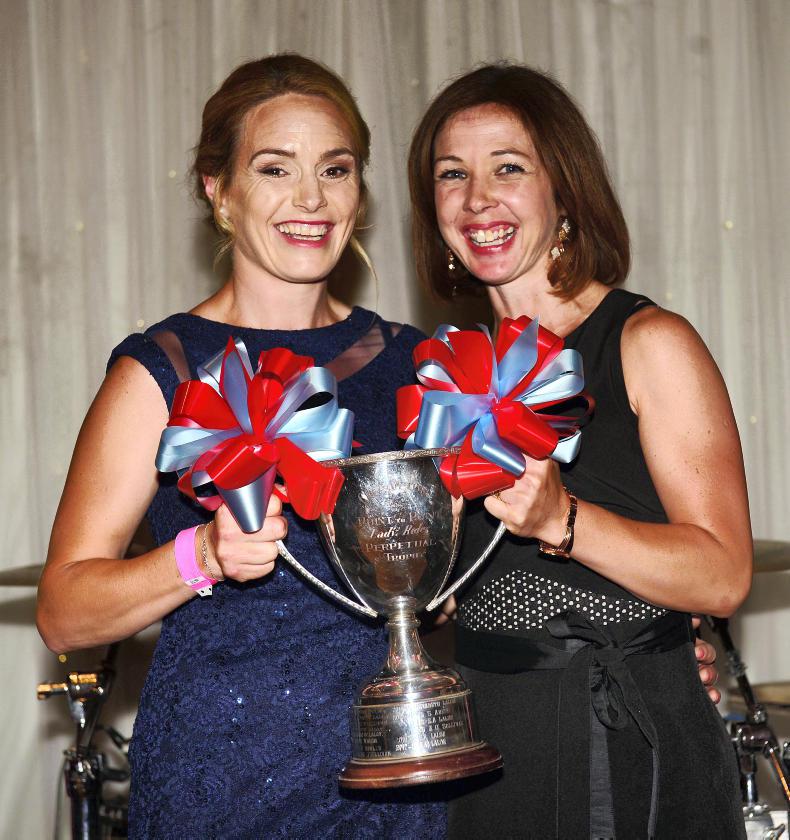
Jennifer with Liz Lalor - sharing a ladies' point-to-point title was "my greatest ever achievement" Healy Racing.
“I would still say no matter what happens in my life that is my greatest ever achievement,” Pugh says with a wide grin.
The warmth of her memories from those days is evident. Even as she rode two lots in the morning, went to work and came home to do the same, she was in thrall to horses and riding in races. Her work colleagues thought she was insane but “racing is your life, medicine was nearly my hobby. I was so immersed in it.”
Having been appointed a racecourse doctor in January 2012, she had resolved to call it a day at the end of the point-to-point season. A broken collarbone suffered in a fall in Oldcastle in April brought retirement forward slightly but the passion for the point-to-point circuit in particular and racing in general is palpable.
Christopher (5) and Conor (3) have had little option but to be exposed to horses, especially the 33-year-old pony Aero who looks after Christopher.
If she had a daughter though, Pugh isn’t sure that she would have the same chance as the boys to progress as a jockey.
Katie O’Farrell has been moved to dip her toes into the UK waters, meaning that the incredible Rachael Blackmore is the only fully-fledged female professional operating over jumps on a full-time basis in Ireland. There hasn’t been one on the flat since Joanna Morgan retired in 1997.
Far behind
“I think we’re so far behind. People will argue girls don’t need a weight allowance but if you look at the French statistics, the number of girls riding in group races, the number of winners they’re getting, the number of ladies riding have all improved dramatically since they brought in the weight allowance so it has proven to be working.
“They’re not getting the rides and they’re certainly not getting the better rides
“England are different. It’s quite strong, especially on the flat but over jumps too. They have so much racing whereas here, there’s a couple of girls on the flat riding but most days when you go into the ladies’ changing room, there’s maybe one, more than likely none and in jumps, there’s usually just Rachael. She’s an outlier in terms of what she’s achieved.”
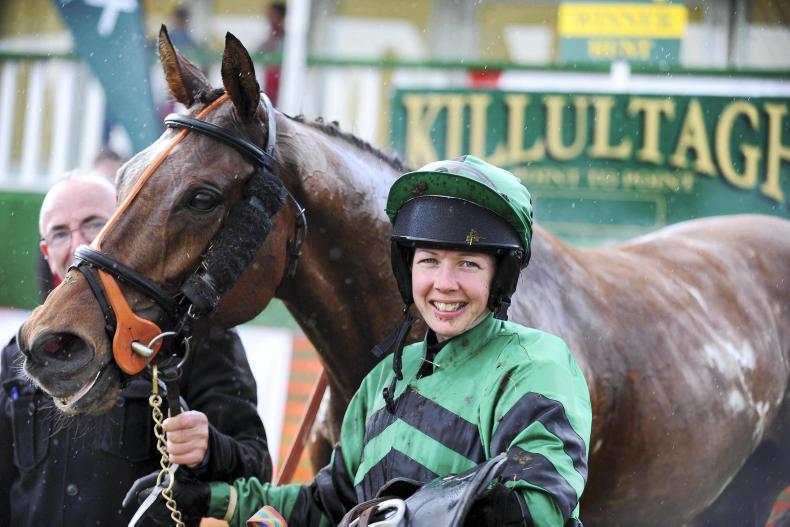
Jennifer after a winner in Largy in 2012 \ Healy Racing
She understands that the notion of an allowance is anathema to the riders who just want to be sign as equal.
“But that’s not borne out in the number of ladies riders that are successful, even in terms of getting rides. How many lady riders on the flat have we had here riding in a Group 1, 2 or 3 or even a listed race in Ireland this year? Bar Rachael there’s no other riding at that level over jumps.
“They’re not getting the rides and they’re certainly not getting the better rides and they’re not featuring anywhere close on the jockeys’ table. So you can say for the world and all that we don’t need a weight allowance but the evidence will argue the opposite to that.
“Rachael and Lisa O’Neill have made it now and they’ve made it through really hard work. But you can’t tell me they wouldn’t have taken your hand off for an allowance 10 years ago.
“They’re where they’re at now at nearly 30 but they could have been there in their early 20s.
“Let’s get the stigma gone and change it and prove that they can do it. And if in 10 years’ time we’re overrun with female riders, take the claim away!
“You’ll have done the job. But it’s not going to happen where we’re at, at the moment.”
The spiralling use of cocaine generally has been mirrored among jockeys and the fact that it doesn’t mess with weight or cause hangovers makes it more attractive to alcohol. The IHRB are looking to be creative in stepping up deterrents but again, also to educate.
The same amount of tests will be carried out but they are looking to be less predictable, in terms of what days of the week might be targeted or the number of tests carried out on a given day. The average eight or 10 per meeting. Now, it may be 20 jockeys tested on a given day and five on another.
“It’s not that I want to get positive tests. I just want the deterrent there. There is a point in the night where they make a decision and you need that doubt to be there so that they make the smart choice.”
She has seen the devastation of jockeys and their families when a positive sample has been returned.
Those people need support but she would love a system in place where action can be taken before a test has been failed. And while her door will always be open, she understands too that jockeys might be loath to step through it.
Mentoring
So starting from next month, a mentoring seminar will begin, with the considerable help of recently-retired and currently active senior jockeys, to help their younger colleagues in this and any other area.
“We’re planning more of a small group workshop setting. So rather than the authorities all standing up here lecturing to people who are asleep or reading their phones or only listening to hear how many days does cocaine take to wear out of your system, we will have an introductory session.
“We have a few addiction counsellors working with us that are going to come along and guide the groups and we seem to have good support from senior jockeys and recently-retired jockeys. The hope is that we could set up a mentoring system.
“There’s nothing I can teach a jockey really that they will take heed of but if you sit down with a senior jockey that’s been there and done it and made mistakes then maybe we can have a discussion flow.
“So they will sit down in small groups of five, 10, 15 people, let the senior or recently-retired jockey who’s been very good to come on board with us, get the discussion going. The addiction counsellors will be there to guide the talk.
“That might be a way for them to see that if you do need help you can go a different channel. You don’t have to pick up a phone to me. You can go to your mentor and say ‘I’m struggling with this or that.’
“If we got this off the ground it wouldn’t have to be specifically about drugs.
“We could roll it out and do a nutritional session, a weight-making session, a rehab-after-injury session, sports psychology session, a health session but it’s to try get them to buy into it.”
Pugh emphasises how she is part of a team 16 doctors who are so central to race meetings, under rules and on the point-to-point circuit. None of it would be possible without her colleagues.
“We have a fabulous team and we’re working really hard. I’m only one of a team that work on race days. They all have a real love and interest in and understanding of racing and we are lucky to have them.”
Racing is lucky to have her too.
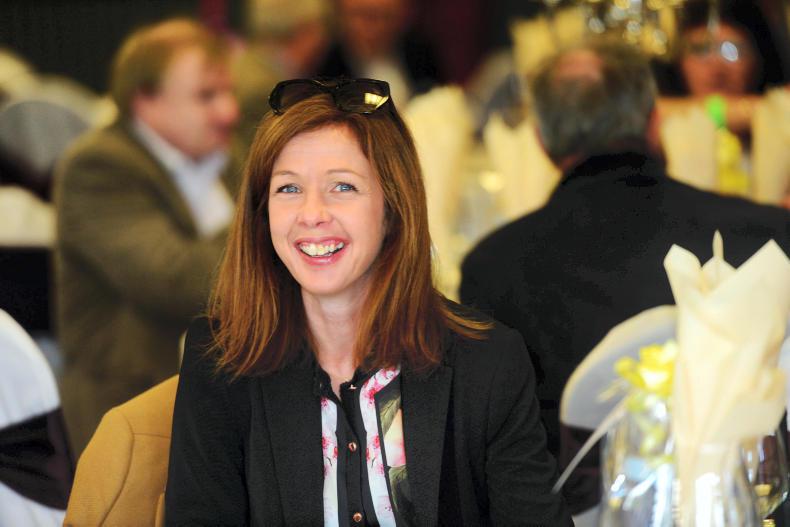



 This is a subscriber-only article
This is a subscriber-only article
 It looks like you're browsing in private mode
It looks like you're browsing in private mode










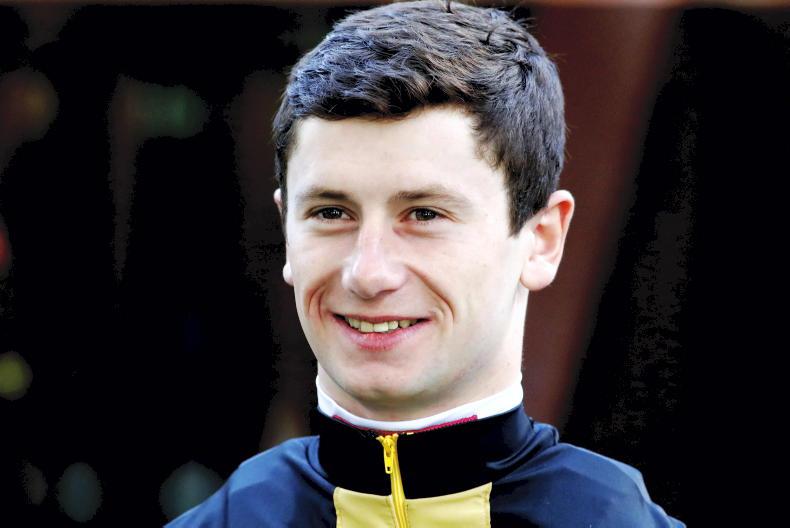

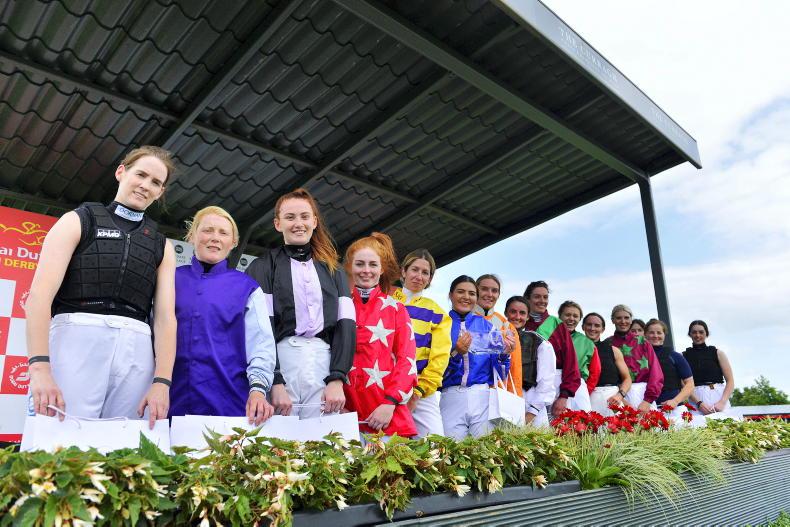
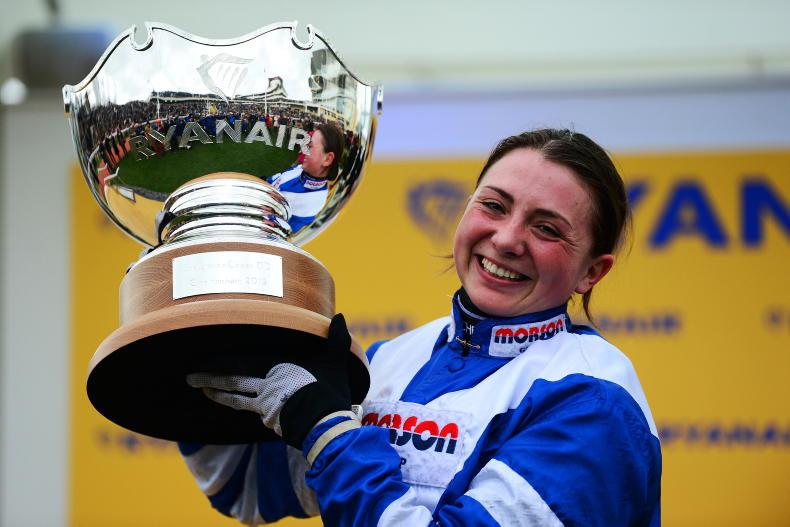
SHARING OPTIONS: